After an anxious period when we were unable to find the office to get our tickets, we took an overnight cama suite bus to La Paz, the seat of the Bolivian government and possibly its capital city (see our last blog and comments for an extended discussion of the technical and legal position). We had concluded, as we travelled through Bolivia, that traditional dress was more common in the smaller and less urban places.
La Paz blew that theory completely out of the water! As we arrived we realised that almost every street is lined with market stalls, with the vast majority of women wearing the traditional skirts with fancy blouses, lots of cardies, shawls and often the high topped bowler hat.
La Paz seems to be a city of market stalls. Every spare space has markets, often taking over parts of the roads and restricting traffic.
Our hotel is in a narrow side street called Aroma, which is full of fabric shops. Traffic is technically allowed to go in both directions but the street is barely wide enough for passing. This is further complicated by the shops spilling out onto the pavement, standing great rolls of fabric up for the approval of passers by and placing No Parking signs in the road itself. The streets all around the hotel are jam packed with stalls selling all manner of basic commodities, primarily to local people.
There is some sense of order though and similar stalls keep close together. For example, in one section of a couple of streets near us, almost every stall sells electrical stuff like plugs and light fittings. The area at the top of our street sells all types of snacks in bulk (and we mean bulk, huge sacks of puffed wheat etc). Further on down the road the stalls specialise in outdoor clothing (pretty much needed as the temperature drops quite a lot out of the sun and especially at night).
We have needed our waterproofs too! So far, each day, the weather has been remarkably consistent. Mornings are cool but with warm sunshine breaking through the clouds making walking around fairly pleasant. But by the early afternoon the clouds have darkened and very loud rumbles of thunder begin echoing off the surrounding mountains. Then it absolutely pours with rain for a couple of hours (or in the case of our first day, huge hailstones clatter all around). This coincides with the point that most stall owners wrap everything in big tarpaulins, tie the whole lot up and disappear.
By the time evening comes the rain has stopped but by then the temperature is cool enough to need jumpers and fleeces ('and gloves and scarfs and woolly socks' says Jen).
We have managed to get out and about in the city, tackling the steep hills and multiple staircases to get from place to place.
A constant challenge is the traffic which is thick and choking and the pavements which are frequently full of stalls or broken up so badly that you have to step into the road. Micros, buses ranging in size from tiny Suzuki vans to ex US schoolbuses, can be flagged down anywhere so they charge from corner to corner racing each other to be first and get the customers. When one stops for passengers all the others behind start blowing their horns and trying to get round them. Pedestrians have a very low priority.
Most of the museums in La Paz seem to be well laid out with good logical displays. The National Art Museum is housed in a stunning building just off the main plaza.
Its religious art was exhibited in themes, such as Angels, which was a very interesting approach. We particularly enjoyed finding yet another Arquebus Angel painting! (Unfotunately we wern't allowed to take photos, so you'll have to just imagine!) The modern art section was less rewarding although there was some nice ceramic work using old pre-Inca iconography.
Three small museums are each located in a restored house in the same street, Calle Jaen, in an old part of town that has been sympathetically renovated. The houses were each beautiful little gems surrounding cool and attractive courtyards with shady balconies to rest in the open air but out of the rain. The displays of gold items in the Precious Metals museum were particularly attractive and made us marvel at the amount of gold that the spanish must have been able to plunder when they took over.
The Murillo House had a number of interesting room settings from different ages as well as some details of the 1809 uprising. This had been quickly put down producing a number of martyrs for the freedom cause, including Murillo himself.
We also visited a private modern art gallery with mostly disappointing exhibits while the star, once again, was the building.
This one was another Gustav Eiffel design with high ceilings, a magnificent glass roof and many stained glass panels. Clearly a house to be coveted when first built in a row of similarly swanky buildings, meny of which are currently being renovated, not sure what to though.
We also mostly enjoyed the National Museum of Archeology for its building. It was constructed around 1910 in a style which is described as ‘Neo-Tiwanaku’. Tiwanaku was the primary culture in this area for hundreds of years before the Incas arrived. The building has a lot of Art Deco-ish details with ziggarat shapes and stained glass windows but with an overlay of motifs drawn from the Tiwanaku culture.
Hence there are reliefs of eagles and warriors, animals and shapes. These are carried through into the interior which now houses a collection of weaving, pottery, metalwork and of course the obligatory mummies.
One area popular with tourists is a couple of streets from us and is generally known as the witches' market. Here you can get all the special tokens, plants, herbs and oils to ensure your ceremonies go well. Of course, importantly, there is a big range of llama foetuses for sale to lead the ceremony or to be buried under the doorway of your house for good luck. Needless to say, we will not be bringing one home with us (although Jen keeps looking closely at them).
We had thought that carnaval was over but we were not quite right. Although the actual week has finished, the weekend saw the final act of carnaval played out in La Paz’s main square (unusually called Plaza Murillo, though it used to be the much more normal Plaza De Armas).
A band of musicians called Los Olvidados (The Forgotten Ones) performed for a fairly big and very enthusiastic crowd. They appear to be something of a community band because there must have been nearly forty of them on the stage playing instruments and singing well known songs. Many were wearing denim overalls and exagerated flat caps. Some of those in the audience were wearing similar clothing or clown costumes and successfully whipping up the crowd.
After the songs and dances, they all formed up as a procession with lots of other people, many in clown and other costumes. They were carrying a coffin and weeping loudly because this is Entierro de Pepino (Pepino’s Funeral).
From what we can gather, Pepino is the main character of the La Paz carnaval and the carnaval starts with a parade of Pepino and his clown friends. Pepino is said to have made many women happy, has many offspring by different mothers but has always evaded marriage through the years. His funeral logically marks the end of the carnaval.
Later that night a carnaval procession came down our street with costumes, dancing girls and of course the obligatory brass band. They were making for a nearby door in a blank wall where they were greeted with shots of something that may have been Tiger’s Milk. Whatever it was, it was well recieved and the entourage made its way through into the depths of the building where their merry-making could be heard well into the next morning.
It was good to see a carnaval where people were making an effort with costumes etc. We also managed to see a couple of exhibitions of carnaval masks and costumes used in La Paz which were highly detailed, really vivid and exciting. It made us sad that by chance we had gone to Sucre, which appears to have the least spectacular carnaval in the area. Still there's always next time...
Possibly the highest capital city in the world...
Tuesday, February 23, 2010
 La Paz, La Paz, Bolivia
La Paz, La Paz, Bolivia
Other Entries
-
68Resistencia: city of sculpture
Dec 2263 days prior Resistencia, Argentinaphoto_camera41videocam 0comment 0
Resistencia, Argentinaphoto_camera41videocam 0comment 0 -
69Our 'current' location
Dec 2362 days prior Corrientes, Argentinaphoto_camera24videocam 0comment 1
Corrientes, Argentinaphoto_camera24videocam 0comment 1 -
70Salta: our first sight of the Andes and our Xmas!
Dec 2560 days prior Salta, Argentinaphoto_camera35videocam 3comment 3
Salta, Argentinaphoto_camera35videocam 3comment 3 -
71Multicoloured mountains and angels with guns!
Dec 2758 days prior Humahuaca, Argentinaphoto_camera53videocam 0comment 1
Humahuaca, Argentinaphoto_camera53videocam 0comment 1 -
72Following the Train To The Clouds
Dec 2956 days prior San Antonio de los Cobres, Argentinaphoto_camera81videocam 0comment 0
San Antonio de los Cobres, Argentinaphoto_camera81videocam 0comment 0 -
73Cafayate; days of wine, icecream and waterways
Jan 0252 days prior Cafayate, Argentinaphoto_camera42videocam 0comment 3
Cafayate, Argentinaphoto_camera42videocam 0comment 3 -
74Tucumán; chilling out and getting heated!
Jan 0549 days prior San Miguel de Tucumán, Argentinaphoto_camera26videocam 0comment 1
San Miguel de Tucumán, Argentinaphoto_camera26videocam 0comment 1 -
75Like Birmingham but better!
Jan 1044 days prior Córdoba, Argentinaphoto_camera64videocam 0comment 2
Córdoba, Argentinaphoto_camera64videocam 0comment 2 -
76Wines, Bikes, Barnsley and Bernard O'Higgins
Jan 1638 days prior Mendoza, Argentinaphoto_camera45videocam 1comment 1
Mendoza, Argentinaphoto_camera45videocam 1comment 1 -
77Over the Andes to Santiago
Jan 2331 days prior Santiago, Chilephoto_camera95videocam 0comment 8
Santiago, Chilephoto_camera95videocam 0comment 8 -
78Carnival Time in Paradise Valley!
Jan 2727 days prior Valparaíso, Chilephoto_camera89videocam 0comment 6
Valparaíso, Chilephoto_camera89videocam 0comment 6 -
79City of churches, craft stalls and penguins!
Jan 3123 days prior La Serena, Chilephoto_camera55videocam 1comment 1
La Serena, Chilephoto_camera55videocam 1comment 1 -
80More Marys than you can shake a skull stick at.
Feb 0617 days prior San Pedro de Atacama, Chilephoto_camera91videocam 3comment 1
San Pedro de Atacama, Chilephoto_camera91videocam 3comment 1 -
81Mountains, lakes, salt plains & altitude sickness
Feb 0815 days prior Uyuni, Boliviaphoto_camera82videocam 1comment 5
Uyuni, Boliviaphoto_camera82videocam 1comment 5 -
82Dead people, dead trains and dead electrics!
Feb 1013 days prior Uyuni, Boliviaphoto_camera30videocam 0comment 3
Uyuni, Boliviaphoto_camera30videocam 0comment 3 -
83Let the festivities begin (but not in the convent)
Feb 1310 days prior Potosi, Boliviaphoto_camera78videocam 0comment 0
Potosi, Boliviaphoto_camera78videocam 0comment 0 -
84No sugar but lots of water and... dinosaurs!
Feb 194 days prior Sucre, Boliviaphoto_camera61videocam 0comment 5
Sucre, Boliviaphoto_camera61videocam 0comment 5 -
85Possibly the highest capital city in the world...
Feb 23 La Paz, Boliviaphoto_camera89videocam 1comment 4
La Paz, Boliviaphoto_camera89videocam 1comment 4 -
86Shining Lake Titicaca (when it isn't raining).
Feb 263 days later Copacabana, Boliviaphoto_camera47videocam 1comment 2
Copacabana, Boliviaphoto_camera47videocam 1comment 2 -
87Despite the name, it's not always sunny here!
Feb 285 days later Isla del Sol, Boliviaphoto_camera51videocam 0comment 0
Isla del Sol, Boliviaphoto_camera51videocam 0comment 0 -
88Incas, Pre-incas and a load of willies.
Mar 0510 days later Puno, Peruphoto_camera113videocam 0comment 0
Puno, Peruphoto_camera113videocam 0comment 0 -
89Road blocks, demos and a scenic journey to Cusco
Mar 0611 days later Cusco, Peruphoto_camera76videocam 0comment 5
Cusco, Peruphoto_camera76videocam 0comment 5 -
90Touring the Sacred Valley
Mar 0712 days later Ollantaytambo, Peruphoto_camera50videocam 0comment 8
Ollantaytambo, Peruphoto_camera50videocam 0comment 8 -
91Visiting the Inca sites around the city.
Mar 0914 days later Cusco, Peruphoto_camera46videocam 0comment 3
Cusco, Peruphoto_camera46videocam 0comment 3 -
92The White City
Mar 1621 days later Arequipa, Peruphoto_camera92videocam 0comment 2
Arequipa, Peruphoto_camera92videocam 0comment 2 -
93Strange markings at Dead Bull!
Mar 2328 days later Toro Muerto, Peruphoto_camera32videocam 0comment 0
Toro Muerto, Peruphoto_camera32videocam 0comment 0 -
94Colca Canyon 1: Snow and the Ice Maiden
Mar 2530 days later Chivay, Peruphoto_camera17videocam 0comment 2
Chivay, Peruphoto_camera17videocam 0comment 2 -
95Colca Canyon 2: Watch out, condors about!
Mar 2732 days later Cabanaconde, Peruphoto_camera56videocam 1comment 1
Cabanaconde, Peruphoto_camera56videocam 1comment 1 -
96Colca Canyon 3: Hot and Passionate
Mar 2833 days later Arequipa, Peruphoto_camera21videocam 0comment 0
Arequipa, Peruphoto_camera21videocam 0comment 0 -
97More lines and symbols but this time they're BIG!
Mar 3136 days later Nazca, Peruphoto_camera41videocam 0comment 2
Nazca, Peruphoto_camera41videocam 0comment 2 -
98Sun worshipping through the years
Apr 0440 days later Trujillo, Peruphoto_camera62videocam 0comment 2
Trujillo, Peruphoto_camera62videocam 0comment 2 -
99We go in search of GOLD!
Apr 0743 days later Chiclayo, Peruphoto_camera58videocam 0comment 4
Chiclayo, Peruphoto_camera58videocam 0comment 4 -
100Sun, surf and a very loud children's fairground
Apr 1147 days later Máncora, Peruphoto_camera22videocam 0comment 3
Máncora, Peruphoto_camera22videocam 0comment 3 -
101In search of exotic animals: we find iguanas
Apr 1349 days later Guayaquil, Ecuadorphoto_camera21videocam 0comment 1
Guayaquil, Ecuadorphoto_camera21videocam 0comment 1 -
102We arrive and dive.
Apr 1652 days later Puerto Ayora, Ecuadorphoto_camera64videocam 2comment 1
Puerto Ayora, Ecuadorphoto_camera64videocam 2comment 1 -
103We set sail, eventually.
Apr 1753 days later Bartoleme, Ecuadorphoto_camera46videocam 0comment 4
Bartoleme, Ecuadorphoto_camera46videocam 0comment 4
Comments
2025-05-22
Comment code: Ask author if the code is blank

 La Paz, La Paz, Bolivia
La Paz, La Paz, Bolivia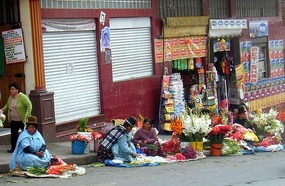
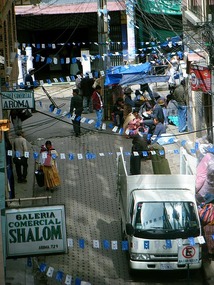
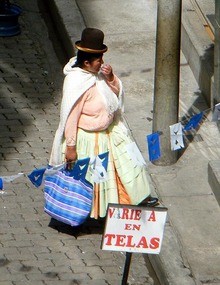

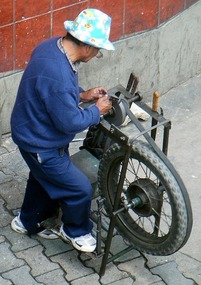
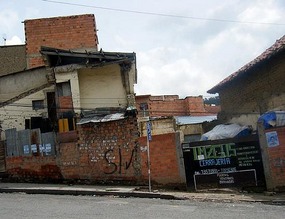
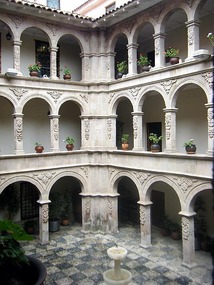
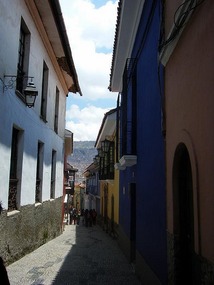
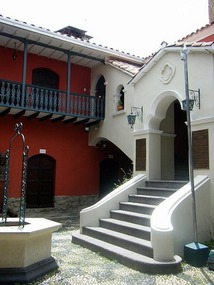
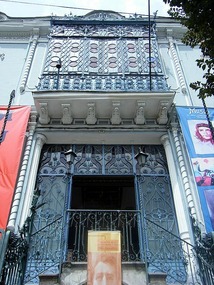
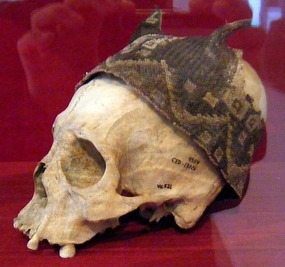
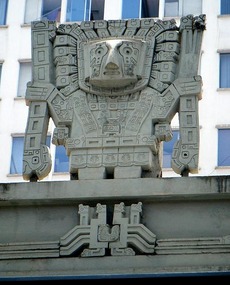
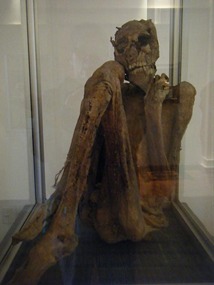
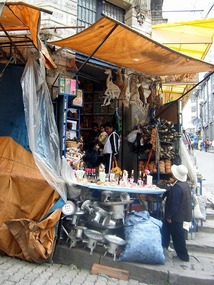
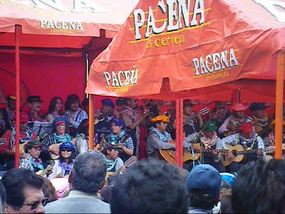
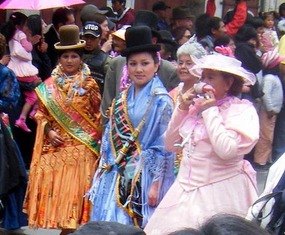
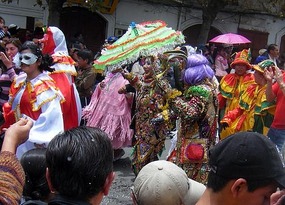
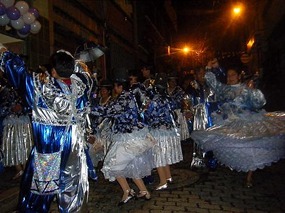
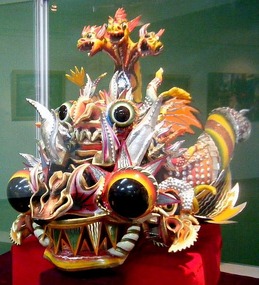






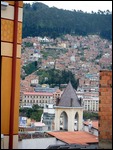
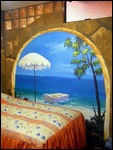
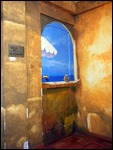
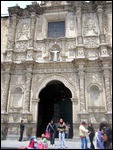

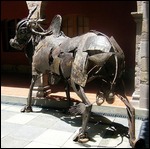
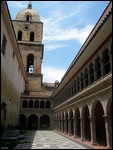
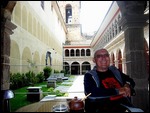
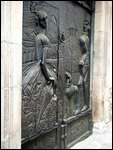

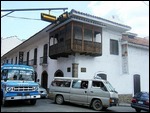
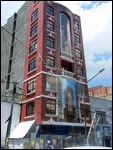
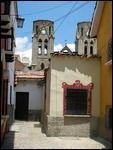
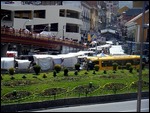
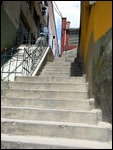
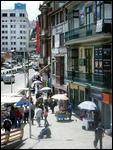
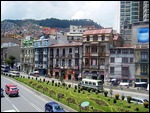
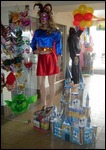

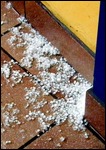
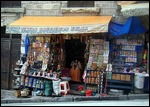
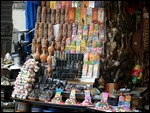
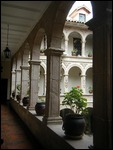



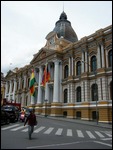
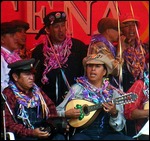
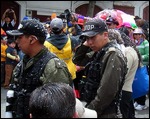


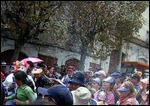


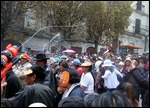
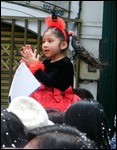
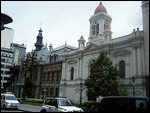
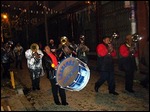
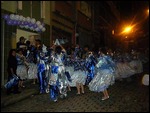
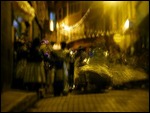
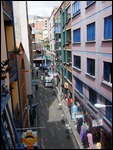
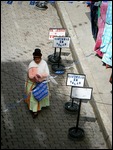
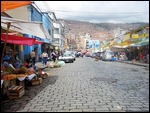
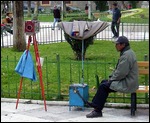

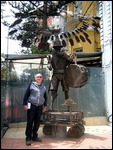

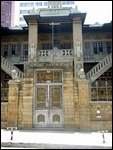
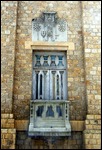

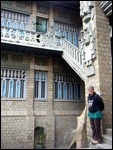
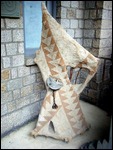

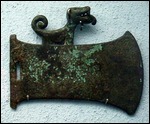
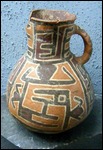
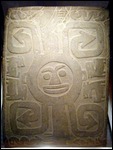
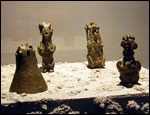
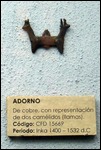


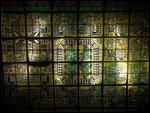
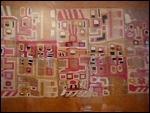


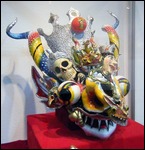




grindrodkaz
2010-02-24
Hey great to see La Paz, I spent most of my time in the room with food poisoning (some dodgy pork and quinoa soup in Peru - so you will be ok with that) and sent Rich out with the manual SLR we had only to wait about a month till we got home to see the photos ...
Rich says did you see any men renting out mobile phones in the main squares, they were the size of bricks and chained to the man and people actually paid to use them!
Enjoy Copacabana and the very non interesting black Madonna, but Lake Titicaca is good
mx-5.snob
2010-02-26
The carnaval masks look fantastic so don't be bringing us home an "under the doorway" llama home as a pressie..... seeing you both home safely will bring us all the luck we need :) Mick & Amanda xxx